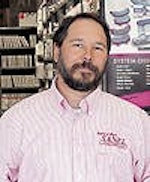A high rate of return is every business owner’s goal when it comes to invested capital but by adding one letter to the end of that phrase it takes on a new and entirely opposite meaning. Change “return” to “returns,” as in returned goods and any parts person with more than a month of experience can tell you tales that will make you want to cry. I will admit that I haven’t done any great amount of research into other areas of retail marketing, but I’ve never seen anyone in line at the grocery store returning items because they decided not to use them. Why is it then that so many automotive parts cross the counter the wrong way?
An estimated 20 to 23 cents of every dollar’s worth of parts we sell is returned to the customer for one reason or another. A little over 5 cents of this is core charges, which is a part of doing business and nothing can be done about it. At least you made the sale and, hopefully, made enough profit to cover your handling expenses for the core.
New returns only cost you money in wasted effort, time and excess inventory. Warranty accounts for another 2 to 3 cents of overall returns and to some extent it is unavoidable just like core charges. Manufacturers do sometimes sell defective or improperly packaged goods, but I’d be willing to bet that a lot of what’s returned as defective is only defective in the customer’s mind. How often have you seen a GM starter returned because the customer says it drags or grinds and when you open the box the shim pack and instructions are still wrapped with not a single greasy fingerprint on them even though the starter is covered with them?
Lifetime warranties on parts that will wear out is another area that in my opinion only serves to raise customer expectations to unreasonable levels and create excess headaches for you. Little, if any, profit is made when you give away good parts for worn out ones and you are still faced with stocking and handling them.
This leaves us with around 13 cents on every dollar sold that is refunded. The reasons for this are as many and as varied as there are makes and models of automobiles. Today’s cars, for all their complexity and on-board diagnostics, are still subject to the same afflictions as the first Model A Ford. A broken wire to the points will shut you down just as fast as a bad connection to an ECM but far too many people look beyond the obvious because the trouble code says its something else.
Make and model proliferation have also contributed to the problem as well as variations of parts within production runs of the same vehicle. I have looked up parts for GM vehicles only to be given a choice of “first design” or “second design” options with no other information on how to differentiate between the two. GM dealers have an excellent parts lookup system available to them that only requires a VIN number. Every optional or variable part that was installed on that vehicle will be given when the desired group number is selected.
I have had some customers who preferred to take the “shotgun” approach to these situations, that is, order everything under the sun and return three quarters of it because they’re either the wrong parts or ones that are not needed. One way to help prevent this scenario is to educate your customers on what it costs you and what it costs them. Any parts flowing backward eat up time and profits for both parties. A waste of time and the loss of money are two things that almost everyone understands. n



